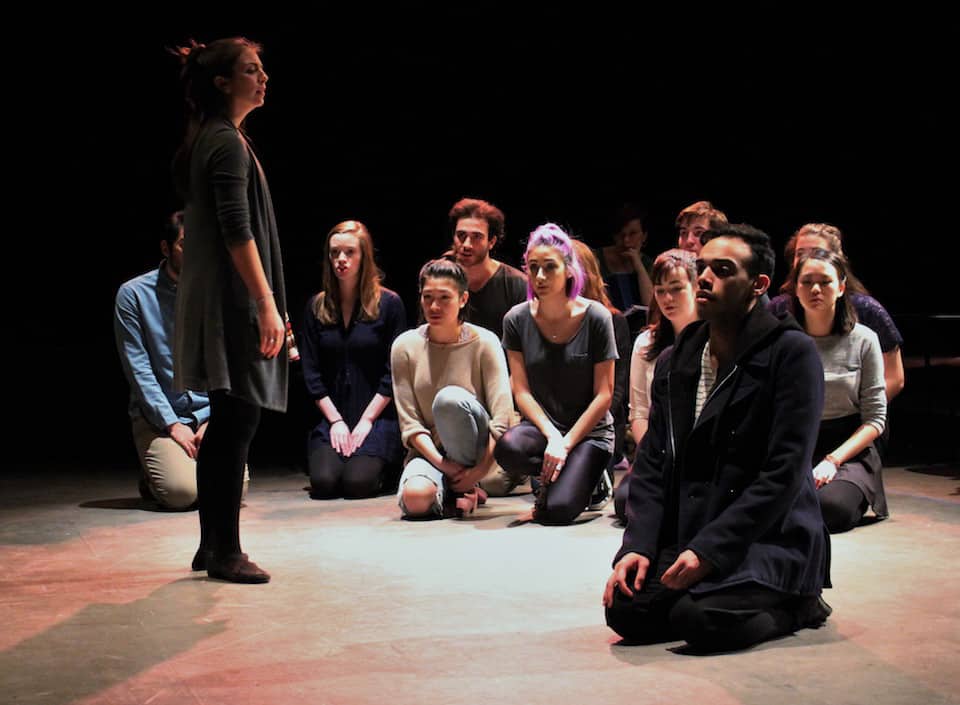On March 1, U of T’s Drama Centre premiered Pericles: Prince of Tyre, a modern adaptation of William Shakespeare’s famous play of the same name. Since September, director Kate Lynch has worked with a cast of 12 fourth-year drama students in order to revive the classical performance, which was staged at the Helen Gardiner Phelan Playhouse.
The plot traces the exploits of the Phoenician Prince Pericles (played by Augusto Bitter), who endeavours to solve a riddle posed by the king of Antioch, Antiochus. Anyone who can successfully solve the king’s riddle will win Thaisa’s hand in marriage; anyone who fails to answer the riddle will be put to death. Upon discovering the riddle’s solution, Pericles fears he will be put to death if he tells the truth. In order to escape execution, the young prince embarks on a thrilling journey at sea, and, in a long-winded effort to win Thaisa, faces shipwreck and torrential storms.
The play explores the complexities of family relationships — particularly between fathers and daughters — themes Lynch approaches “in a manner quite unlike anything audiences had seen before, and in many ways, since.”
The action takes place not on a stage but in the middle of the room, with chairs encircling the actors’ space. The audience is closer to the performers, yet depending on seating are not always able to see the actors’ facial expressions.
The use of space creates an intimate atmosphere for both the spectators and the actors. In order to make the play’s dialogue more accessible to the audience, Lynch asked her actors to refrain from overcomplicating Shakespearean verse. Actress Olivia Nicoloff noted that “one of the biggest challenges for me — and all of us — was wrapping [our] brain[s] around the idea that Shakespeare can be ‘simple’. Acting it as ourselves, doing a scene study without a set to speak of and without real props or costumes, while the language and emotions are so heightened, was fantastic.” This is made evident throughout the play; one of the most successful aspects was the actors’ enthusiastic engagement with their characters.
The technical side of the production demonstrates a strong level of creativity and competence. As Prince Pericles sails the mysterious seas, a particularly climactic scene comes in the form of a massive thunderstorm. The tempest is brought to life by flashing blue and white lights that are accompanied by colorful projections of the rain designed to resemble sharp, vibrant spears falling out of the skies. The sound effects foster a mood of despair and danger as Pericles delivers a monologue in the wake of booming thunderclaps. Here, the initial positioning of the stage comes into effect, as the spectators find themselves surrounded by the raging storm.
Although initially the performance’s staging may feel uncomfortable for the audience — especially for those more accustomed to traditional theatre — Lynch’s decision to avoid conventional elements is ultimately effective. Her decision to avoid ancient Greek costumes in favour of contemporary clothing works to the play’s advantage, seeing as the spectators get to see the characters’ individual personalities unmasked behind. Just like Pericles’ voyage, the play is an emotional rollercoaster and a thrill to watch.
Pericles: Prince of Tyre is playing at the Helen Gardiner Phelan Playhouse until March 12th.
Correction (March 8th, 2016): The production runs until March 12th, not until March 13th, as was previously stated. Additionally, Thaisa is not the daughter of Antiochus, and Pericles does not try to “save” her. The Varsity regrets the errors.


